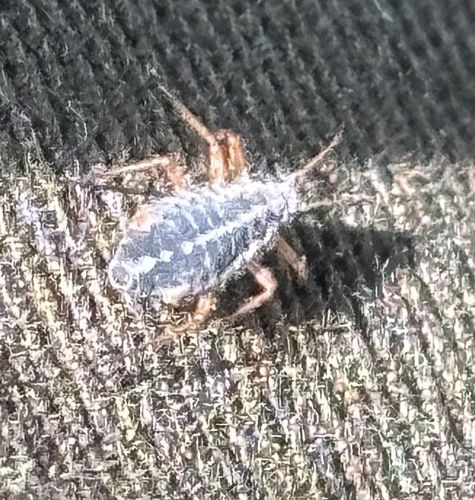Ant mimic planthopper nymph (likely)
Scientific Name: Likely a nymph stage of a planthopper (Family Flatidae or similar), specific genus and species unknown without further identification.
Order & Family: Hemiptera, Auchenorrhyncha (suborder), Flatidae (family is a possibility, or other families of planthoppers)
Size: Nymphs typically range from 2-10 mm depending on the specific species and developmental stage.

Natural Habitat
Found on various plants, shrubs, and trees where they feed on sap. Often camouflaged against bark or leaves.
Diet & Feeding
Plant sap. They use piercing-sucking mouthparts to extract sap from the phloem of plants.
Behavior Patterns
Nymphs of many planthoppers are typically sedentary, often covered in waxy filaments for camouflage and protection. They move by walking or occasionally jumping when disturbed. Some species exhibit ant-mimicry, which might explain the irregular shape and texture that could be mistaken for debris or part of an ant's appearance. The white, waxy secretions visible in the image are common for planthopper nymphs and serve as a defense mechanism.
Risks & Benefits
Generally considered harmless to humans. In large numbers, some species can occasionally be minor pests to agricultural crops or ornamental plants due to sap feeding, but severe damage is rare. They are part of the larger food web, serving as food for various predators.
Identified on: 9/21/2025